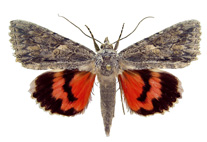Abstract
According to current taxonomy, Subgenus Cathoplius C.G. Thomson, 1875, within the Genus Carabus Linnaeus, 1758 (in the broad sense), includes two species: C. (Cathoplius) asperatus (Dejean, 1826), monotypic with a northern distribution, and the southern polytypic substitutive species C. (Cathoplius) stenocephalus Lucas, 1866. The authors describe the life-way, life-cycle and pre-imaginal characters of the taxa currently ascribed to Subgenus Cathoplius, with details never provided before. Cathoplius are ground beetles adapted to live in arid environments and extreme habitats such as sub-desert areas. All of them are strictly helicophagous, both during the pre-imaginal stages and as adults, and are localized in a narrow fringe along the Atlantic coast of northwestern Africa. Several data and observations on the eco-ethology of the different taxa, obtained both in field and in laboratory, are reported. The life-cycle of Cathoplius belongs to the winter breeding type, with an extremely high fecundity rate concentrated in a very short period of time, that has no similarity to any other Carabus species. Eggs, larvae and pupae of the different species and subspecies of Cathoplius are described and illustrated. Larval characters clearly place Subgenus Cathoplius into the lineage of Neocarabi, confirming it as a monophyletic and homogeneous assemblage. Hybridization trials between some taxa led to a reduced survival rate of the progeny, thus confirming their specific or subspecific differentiation as proposed by classical taxonomy. Furthermore, hybridization results suggest that C. (Cathoplius) stenocephalus aliai could be considered as a distinct species. Notes about the origin, biogeography and phylogeny of Cathoplius are also provided.

